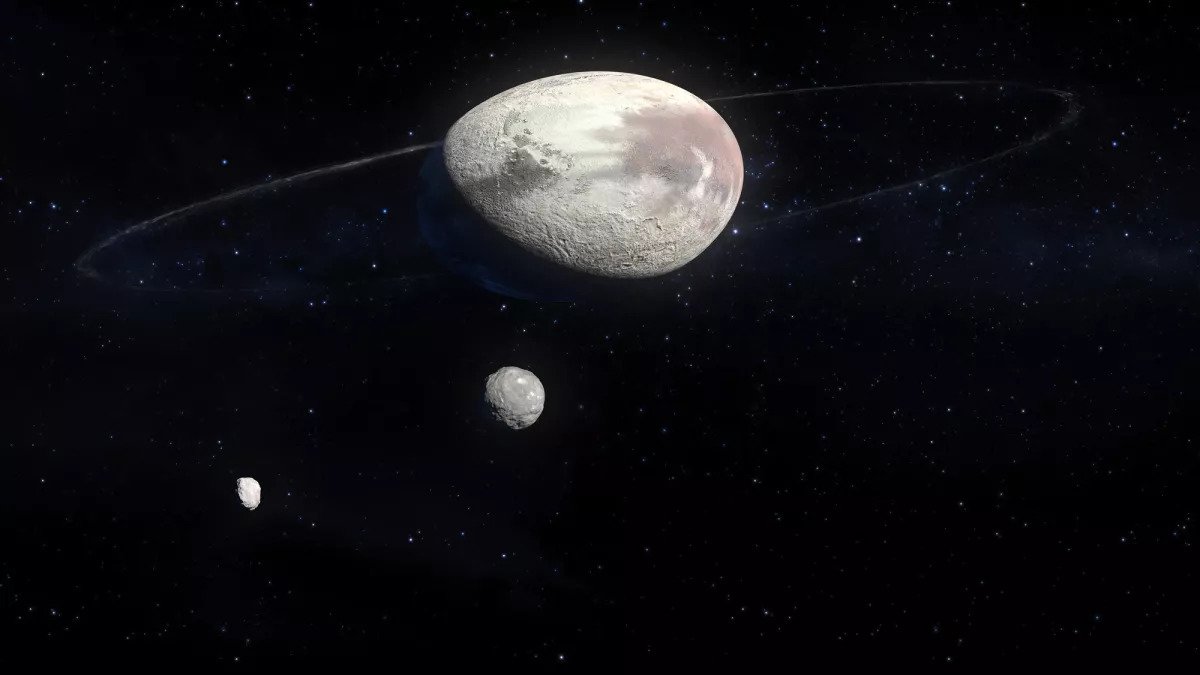The dwarf planet Haumea, which is located beyond the orbit of Neptune, has an amazing elongated shape and rotates very fast. Scientists conducted a simulation and were able to explain how this celestial body acquired its bizarre features.

Bizarre features of Haumea
The dwarf planet Haumea orbits the Sun in an orbit beyond Neptune. In size, this celestial body is close to Pluto, but has a strange shape resembling an elongated egg. Scientists suspect that this is due to its very fast rotation around its axis.
A day on Haumea lasts only four hours. In addition, its surface differs from the rest of the Kuiper Belt bodies in that it mainly consists of water ice. Finally, other objects with the same characteristics fly in the same orbit that this celestial body rotates. They are commonly called the Haumea family.
Scientists from the Goddard Space Flight Center and Arizona State University decided to build a model of how this celestial body evolved. They found a script that could explain all its bizarre features.
Model of evolution
The initial data used by the scientists were the mass, size and rotation period of Haumea. From them, the researchers learned the density of this celestial body and the density of its core. This allowed us to understand how the mass is distributed inside it and what its evolution is.
Scientists have found that at the beginning of the existence of the Solar System, the dwarf planet had a much lower density than it is now and was three percent more massive. Then they worked through several dozen scenarios and found one that would lead to its current state.
The root cause of the change was a large body that collided with Haumea tangentially. It led to the splitting of fragments from it that flew into distant space. The rotation accelerated to magnitudes even more than it is now.
The heaviest rock sank into the center of the dwarf planet, and lighter water ice formed a light crust. However, the rotation was so fast that the outer layers of ice at the equator could not be held and broke away from Haumea. That’s how the family originated.
However, the separation of the pieces led to a decrease in the moment of inertia of the dwarf planet, and it acquired its modern elongated shape and slowed down the rotation a little. The water ice partially melted and penetrated deep into the planet.
According to www.space.com
Follow us on Twitter to get the most interesting space news in time
https://twitter.com/ust_magazine
